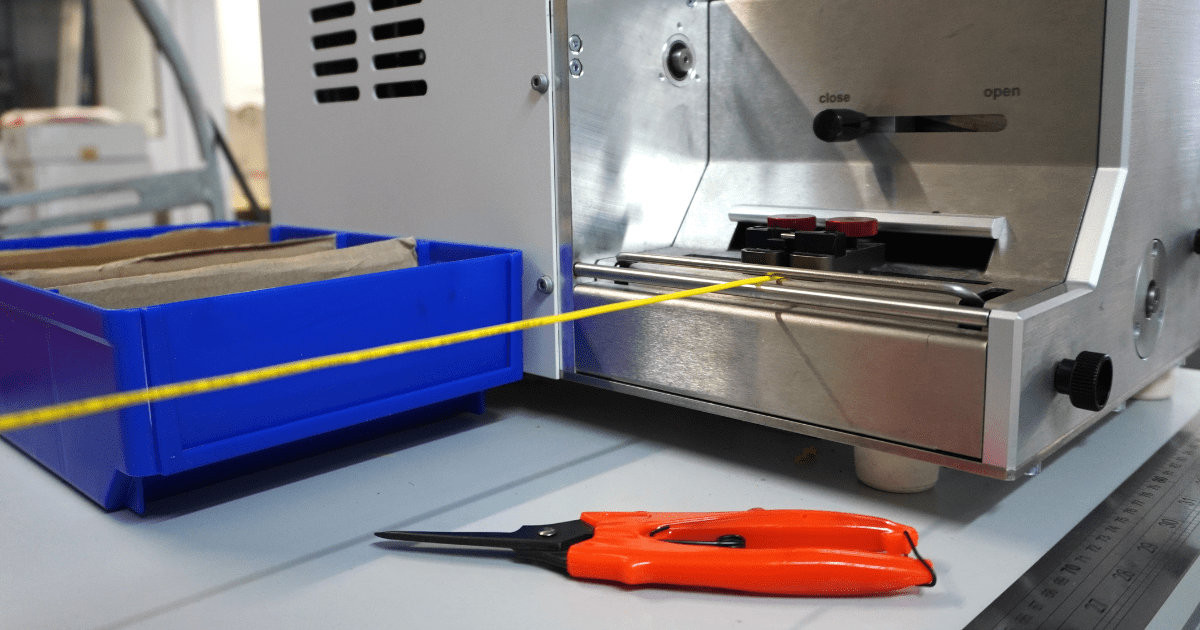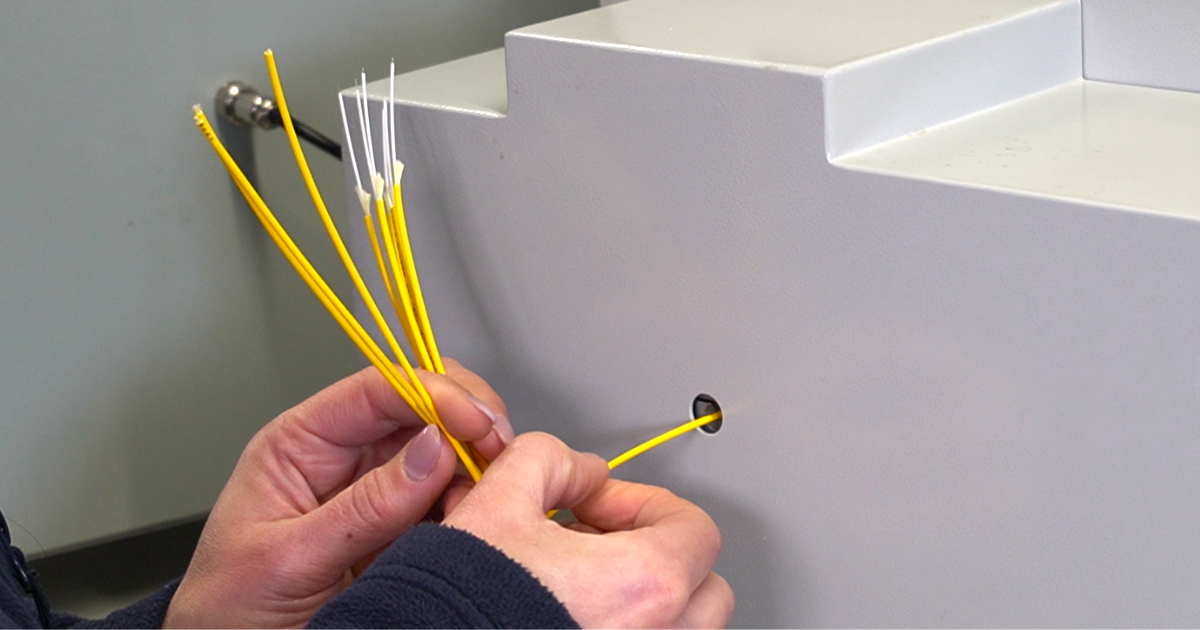Fiber Optic Cable Manufacturing Process: Fiber Cut and Storing

Fiber optic cable manufacturing, fiber cut and storing included, is a complex process that involves many steps, rules and cares that should be considered.
The fiber cut and storing are just a part of the manufacturing process. Like the other phases of the manufacturing process, these have some specifications to them.
In this article, we’ll describe these specifications by following the example of patch cords manufacturing.
Fiber Storing
Before the fiber cut, we have to store the fiber as it arrives in the manufacturing laboratory.
There are some rules for storing fiber optic cable reels, whether for Laboratory production or for on-site installation.
These rules have the objective of avoiding damage and exchange of the fiber cables:
- Always keep the manufacturer’s label. It contains information on the type of cable, attenuation, lot, etc. The labels are essential for traceability and to avoid product exchanges.
- The reels must be in horizontal position. This avoids stress on the cable.
- Never let the reel flaps touch the cable of other reels. This can cause damage to the cable that may not be visible on the outside, only being detected at the end of production.

Besides these rules, during storage, we should also take into consideration some cares regarding the handling of the fibers. This, to secure the well-being of the technician handling them:
- Wear suitable, disposable clothing. Fiber particles can stay on the clothing and be transferred to food or drinks.
- Never have food or drink in the same area where you work with fiber. The fiber particles, when ingested, may cause serious internal bleeding problems.
- Always wear safety glasses with side protection. While working with fiber never put your hands to your eyes, as fiber particles can easily get in your eyeballs.
Fiber Cut
To begin the production of any type of patch cord, we must cut the cable to the right measurement. This looks like a simple process, but it requires some cares.
In the fiber cut process, we must be aware of some problems that we can cause to the cable if we are not careful. Four of these cares are:
1. Avoid excessive bending. During the entire cutting process, we must keep the bending radius within the limits of the cable. This radius is usually 10x the diameter – if the cable is 2mm, the minimum radius will be 10×2=20mm bending radius. But we must always check the manufacturer’s recommendation.
|
2. Never apply more pulling force than recommended. Usually, the cable is cut from a reel with 2 or 4 km of cable. Even using equipment that makes it easy to rotate the reel to remove the cable, we must be careful not to pull on the outer insulation or jacket. Underneath the jacket is the power element, the aramid yarn, known as Kevlar. And underneath that is the primary and secondary buffer, and the fiber optic. |
 |
If we pull the coil cable through the jacket, it will slide through the aramid yard, which being the strength element. Since it has no elasticity, it will stretch. Late, this soft plastic will tend to return to its initial position, exposing the Kevlar.
To avoid this, the fiber cutting equipment has to unwind the cable automatically as the counting machine pulls.
Still, there must be a mechanism to cushion the impact of the start of the cut. This mechanism is two pulleys, one fixed and one moving. The cable passes through these several times, creating a cable buffer. This buffer will be used from the moment the unwinder starts up and keeps up with the cable requirement.
-min.png?width=1200&height=630&name=Blog%20Post%20(5)-min.png)
3. Beware of kinking and crushing. Besides causing breakage in the fiber, it can cause micro bending inside the cable and create high attenuations.
4. After programming the cutting machine with the measurements and tolerances of the cables to be produced, we can start cutting the cables. They will automatically be wound into cable collector bowls. These cable rolls must be tied with soft materials like velcro or plastic tape. Never with materials harder than the cable itself, such as serrated ties or wires, to avoid damage to the cables.
In the phase of the fiber cut and storage, these cares and rules are fundamental. Not only to assure the integrity of the fibers, but also the health of the people who are handling them. They mustn’t be ignored or skipped to avoid such problems.


